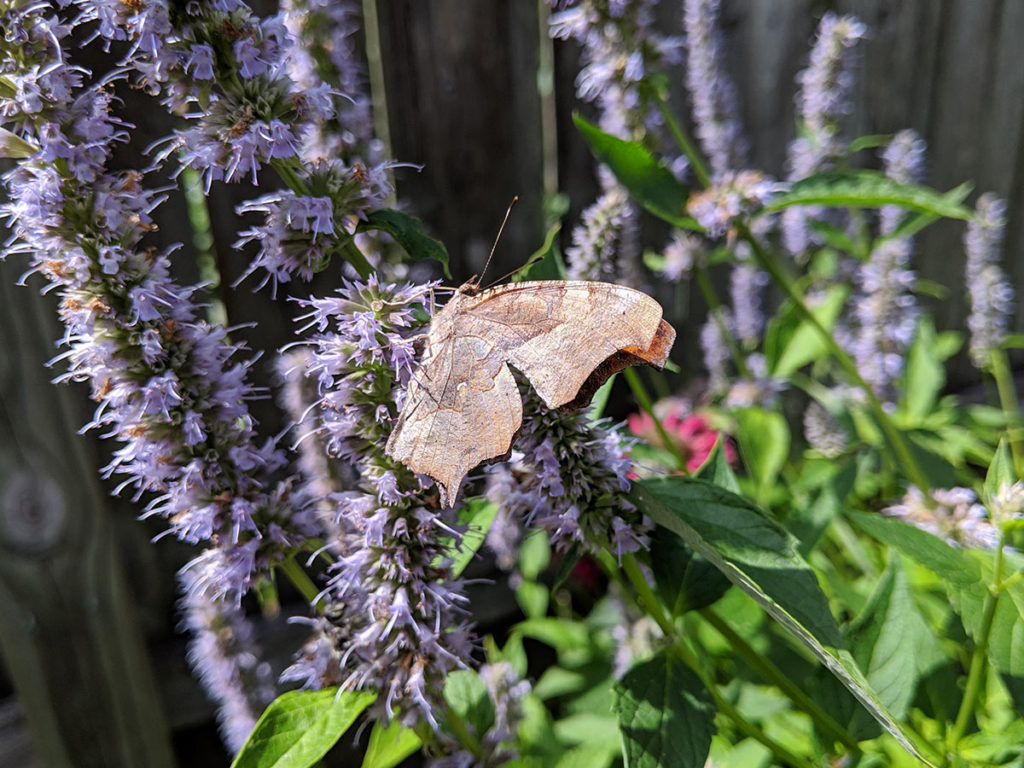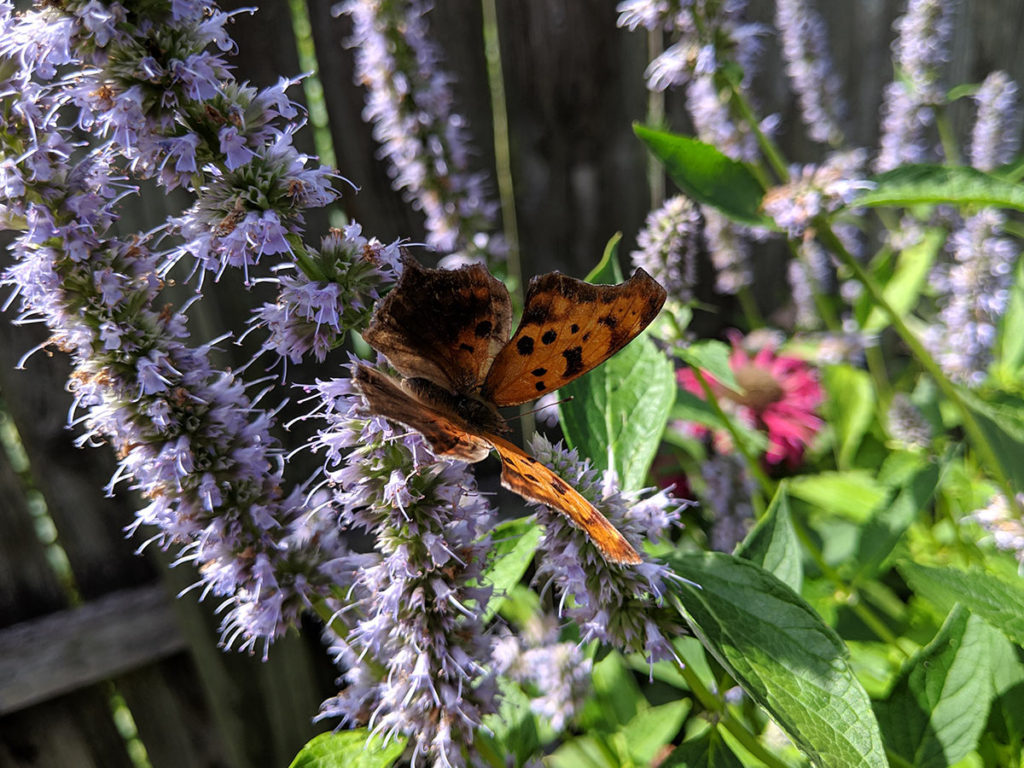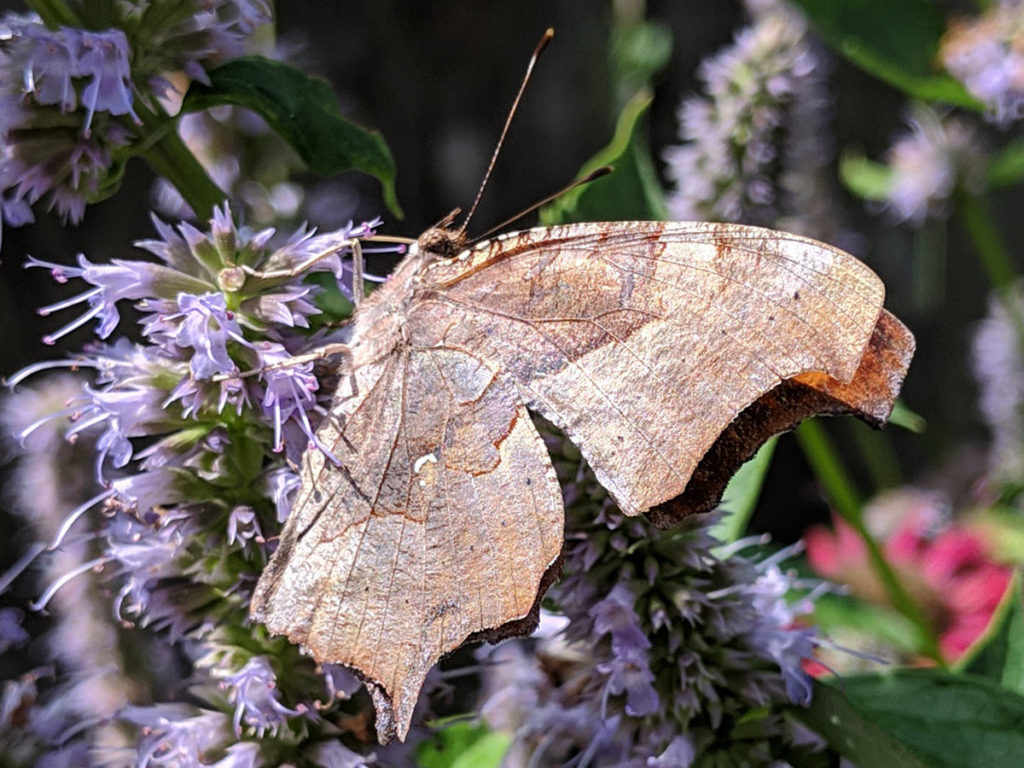A winged visitor to the Anise Hyssop ( Agastache foeniculum )today caught my eye. We have had swallowtails and monarchs make appearances in the garden this season. This butterfly really stood out as being different from those. When perched on the plant, it looked like a dead leaf had fallen on the hyssop. Even beyond the coloring of the underside of the wings, the shape of the wings’ edges reminded me of a leaf.

When its wings opened, the pattern consisted of the prettiest burnt orange and black colors. I of course snapped a few photos and consulted the Michigan Butterflies and Skippers guide. This butterfly is a Question Mark (Polygonia interrogationis). The darker color on the hindwings is the summer form. Totally didn’t know butterflies have winter and summer forms!

Common but Not a Comma
The guide lists this butterfly as “one of our commonest anglewings” in Michigan. Anglewings? Apparently this is just an English catch all term for butterflies with angulate wing shapes.
Question Marks do belong to the family Nymphalidae, which are commonly called brushfoots. This is a large family tied together by the shared trait of the male having forelegs reduced to “brushlike appendages”.
While trying to identify the butterfly, I was struggling with the difference between a Question Mark and a Comma. The guide stated the Commas are smaller, but unfortunately I was using photographs and not at the plant with the butterfly. What finally helped me make the decision is the small, silver marking on the underside of the wing. I zoomed in here so it can be seen better.

The marking on the underside of the hindwing consists of a curve and a dot. This is the identifying mark of a Question Mark butterfly. If it had been a Comma, the hindwing would have the silver curve but no dot.
The Real Question: Why The Lot?
Since I select plants with pollinators of all sorts in mind, I am of course curious why the Question Mark was visiting. The host plants for caterpillars are “elm, nettle, hackberry and hops”. Also, the guide states adults do not often nectar on flowers but prefer rotted fruit and tree sap instead.
When they do visit flowers, the plants include “aster, common milkweed and bog-rosemary”. However, the hyssop belongs to the mint family. We do have a lot of common milkweed on The Lot this season, but much of it is past bloom time. The asters are getting ready, but will not be blooming until a few weeks from now. Maybe like the Giant Swallowtail last year, this little one was looking to expand its culinary horizons.